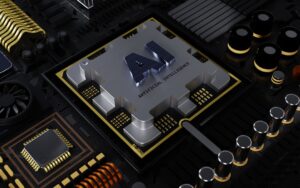Building your own custom PC can be a rewarding and cost-effective way to get the computer of your dreams. Whether you’re a gamer, a content creator, or just someone who wants a powerful and personalized machine, building your own PC allows you to select the exact components that meet your needs and budget. It also gives you the opportunity to learn about the inner workings of a computer and gain valuable technical skills.
When you build your own PC, you have the freedom to choose the best components for your specific needs, whether it’s a high-performance processor for gaming, a large amount of RAM for video editing, or a fast SSD for quick boot times. Additionally, building your own PC allows for easy upgrades and customization in the future, ensuring that your computer can grow and adapt as your needs change. With the right guidance and knowledge, building a custom PC can be a fun and fulfilling experience that results in a machine that is perfectly tailored to your needs.
Key Takeaways
- Building a PC allows for customization and control over the components used, leading to a personalized and high-performing computer.
- Selecting the right components is crucial for compatibility and performance, so research and planning are essential.
- Building a custom computer requires careful assembly and attention to detail, but can be a rewarding and cost-effective process.
- Troubleshooting and regular maintenance are important for keeping a custom PC running smoothly and efficiently.
- Overclocking and performance tuning can enhance a custom PC’s capabilities, but should be done cautiously to avoid damage.
Selecting the Right Components
Selecting the right components is crucial when building a custom PThe first step is to determine the purpose of your PC, whether it’s for gaming, content creation, or general use. This will help you decide on the appropriate CPU, GPU, RAM, storage, and other components. For gaming, a high-performance CPU and GPU are essential, while content creators may prioritize a large amount of RAM and fast storage options.
When selecting a CPU, consider factors such as core count, clock speed, and compatibility with other components. AMD and Intel are the two main CPU manufacturers, each offering a range of options for different budgets and performance needs. The GPU is another critical component for gaming and content creation, with options from NVIDIA and AMD offering different levels of performance and features.
RAM is also an important consideration, with higher capacities and faster speeds providing better multitasking and overall system performance. Storage options include traditional hard drives for large capacity at a lower cost, as well as SSDs for faster boot times and application loading. Finally, the motherboard is the foundation of your PC build, providing connectivity for all components and determining compatibility and expandability.
Building Your Custom Computer
Once you have selected all the necessary components for your custom PC build, it’s time to start assembling them into a functional system. Begin by preparing a clean and well-lit workspace with plenty of room to work. Carefully unpack each component and organize them in a way that makes it easy to access everything you need during the build process.
Start by installing the CPU into the motherboard, being careful to align it correctly and secure it in place with the retention mechanism. Next, install the RAM modules into their respective slots on the motherboard, ensuring they are fully seated and locked into place. Then, install the motherboard into the case, securing it with the appropriate screws and ensuring that all ports and connectors line up with the case cutouts.
After installing the motherboard, it’s time to install the power supply unit (PSU), storage drives, and any additional expansion cards such as GPUs or sound cards. Connect all necessary power cables from the PSU to the motherboard, CPU, GPU, and storage drives. Finally, connect all case fans, front panel connectors, and any other peripherals to the appropriate headers on the motherboard.
Troubleshooting and Maintenance
| Category | Metric | Value |
|---|---|---|
| Troubleshooting | Number of reported issues | 150 |
| Troubleshooting | Resolution time | 2 hours |
| Maintenance | Preventive maintenance tasks completed | 95% |
| Maintenance | Equipment downtime | 5 hours |
After completing the build process, it’s important to thoroughly test your custom PC to ensure that all components are functioning properly. Power on the system and enter the BIOS to verify that all components are detected and operating at their correct settings. Install an operating system and run stress tests to check for stability and performance issues.
If any issues arise during testing, it’s important to troubleshoot and diagnose the problem before it becomes more serious. Common troubleshooting steps include checking for loose connections, updating drivers and firmware, and testing individual components in another system if possible. Regular maintenance of your custom PC is also important to ensure long-term reliability and performance. This includes cleaning dust from fans and heatsinks, updating software and drivers, and monitoring temperatures and system health.
Overclocking and Performance Tuning
For enthusiasts looking to squeeze every last drop of performance from their custom PC, overclocking is a popular method of increasing CPU and GPU speeds beyond their stock settings. Overclocking can result in significant performance gains in tasks such as gaming and content creation, but it also requires careful consideration of cooling and power delivery to prevent damage to components.
Before attempting to overclock your CPU or GPU, it’s important to research safe voltage and temperature limits for your specific hardware. Use software tools such as MSI Afterburner or Intel Extreme Tuning Utility to gradually increase clock speeds while monitoring temperatures and stability. It’s also important to stress test your overclocked settings to ensure they are stable under heavy loads.
In addition to overclocking, performance tuning involves optimizing system settings such as power profiles, memory timings, and storage configurations to achieve the best possible performance for your specific workload. This may involve adjusting fan curves for better cooling, enabling XMP profiles for faster RAM speeds, or configuring RAID arrays for improved storage performance.
Customizing Your PC

One of the benefits of building a custom PC is the ability to customize its appearance to suit your personal style. This can include adding RGB lighting, custom cable management, and unique case modifications. RGB lighting kits are available in a variety of colors and styles, allowing you to create a personalized lighting scheme that complements your setup.
Custom cable management involves routing power cables and data cables in a neat and organized manner to improve airflow and aesthetics inside your PC case. This can be achieved using cable combs, sleeved extensions, and cable management accessories that are available in various colors and materials.
Case modifications such as window panels, custom paint jobs, and 3D-printed accessories can further personalize your PC build and make it stand out from off-the-shelf systems. These modifications can be as simple as adding decals or as complex as creating custom water cooling loops with hard tubing and elaborate reservoirs.
Upgrading Your Custom Computer
As technology advances and your needs change over time, upgrading your custom PC is a cost-effective way to extend its lifespan and improve its performance. Upgrades can include adding more RAM for better multitasking, upgrading to a faster CPU for improved productivity, or installing a more powerful GPU for better gaming performance.
When planning upgrades for your custom PC, it’s important to consider compatibility with existing components such as the motherboard, power supply unit, and cooling solution. For example, upgrading to a more powerful CPU may require a new motherboard with a compatible socket type, while upgrading to a more powerful GPU may require a higher wattage PSU.
In addition to hardware upgrades, software optimizations such as driver updates, BIOS updates, and operating system tweaks can also improve system performance without requiring new hardware. Regularly monitoring system temperatures, fan speeds, and component health can help identify potential upgrade opportunities before they become critical issues.
In conclusion, building a custom PC offers numerous benefits including flexibility in component selection, customization options, and potential for future upgrades. By carefully selecting the right components, assembling them into a functional system, troubleshooting any issues that arise, and optimizing performance through overclocking and customization, you can create a powerful and personalized computer that meets your specific needs. With regular maintenance and thoughtful upgrades over time, your custom PC can provide years of reliable performance for gaming, content creation, productivity, or any other tasks you throw at it.
If you’re interested in building your own PC kit, you might want to check out this article on how to choose the best components for your custom PC build. It provides valuable insights and tips on selecting the right parts for your build, ensuring that you end up with a high-quality and efficient system. Whether you’re a beginner or an experienced builder, this article can help you make informed decisions when putting together your own PC.
FAQs
What is a build your own PC kit?
A build your own PC kit is a collection of components and parts needed to assemble a personal computer. It typically includes a CPU, motherboard, RAM, storage, power supply, case, and other necessary components.
What are the benefits of building your own PC?
Building your own PC allows for customization and control over the components used, which can result in a more powerful and cost-effective computer. It also provides a better understanding of how a computer works and the ability to easily upgrade or repair individual parts.
What components are typically included in a build your own PC kit?
A build your own PC kit usually includes a CPU, motherboard, RAM, storage (such as a hard drive or SSD), power supply, case, cooling system, and sometimes a graphics card. It may also include cables, screws, and other accessories needed for assembly.
Is it difficult to build your own PC?
Building a PC can be a challenging task for beginners, but with the right guidance and resources, it is achievable for most people. There are many online tutorials and guides available to help with the assembly process.
What tools are needed to build a PC from a kit?
Common tools needed to build a PC from a kit include a screwdriver, anti-static wrist strap, cable ties, and thermal paste. It’s also helpful to have a clean, well-lit workspace to assemble the components.
Can I customize the components in a build your own PC kit?
Yes, one of the main advantages of building your own PC is the ability to customize the components to fit your specific needs and preferences. You can choose the CPU, GPU, storage, and other parts based on your budget and intended use for the computer.


